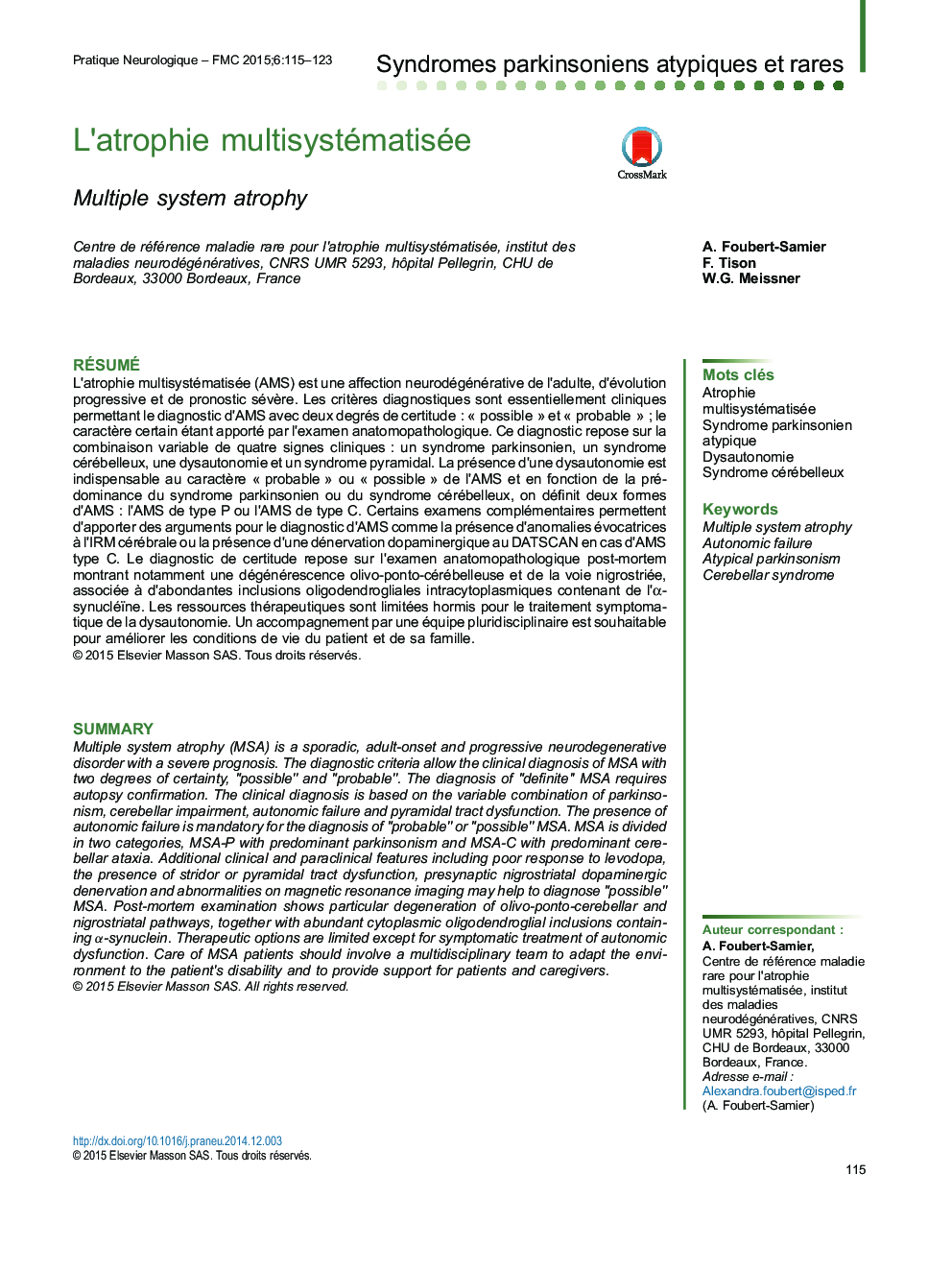| Article ID | Journal | Published Year | Pages | File Type |
|---|---|---|---|---|
| 3087167 | Pratique Neurologique - FMC | 2015 | 9 Pages |
Abstract
Multiple system atrophy (MSA) is a sporadic, adult-onset and progressive neurodegenerative disorder with a severe prognosis. The diagnostic criteria allow the clinical diagnosis of MSA with two degrees of certainty, “possible” and “probable”. The diagnosis of “definite” MSA requires autopsy confirmation. The clinical diagnosis is based on the variable combination of parkinsonism, cerebellar impairment, autonomic failure and pyramidal tract dysfunction. The presence of autonomic failure is mandatory for the diagnosis of “probable” or “possible” MSA. MSA is divided in two categories, MSA-P with predominant parkinsonism and MSA-C with predominant cerebellar ataxia. Additional clinical and paraclinical features including poor response to levodopa, the presence of stridor or pyramidal tract dysfunction, presynaptic nigrostriatal dopaminergic denervation and abnormalities on magnetic resonance imaging may help to diagnose “possible” MSA. Post-mortem examination shows particular degeneration of olivo-ponto-cerebellar and nigrostriatal pathways, together with abundant cytoplasmic oligodendroglial inclusions containing α-synuclein. Therapeutic options are limited except for symptomatic treatment of autonomic dysfunction. Care of MSA patients should involve a multidisciplinary team to adapt the environment to the patient's disability and to provide support for patients and caregivers.
Keywords
Related Topics
Life Sciences
Neuroscience
Neurology
Authors
A. Foubert-Samier, F. Tison, W.G. Meissner,
